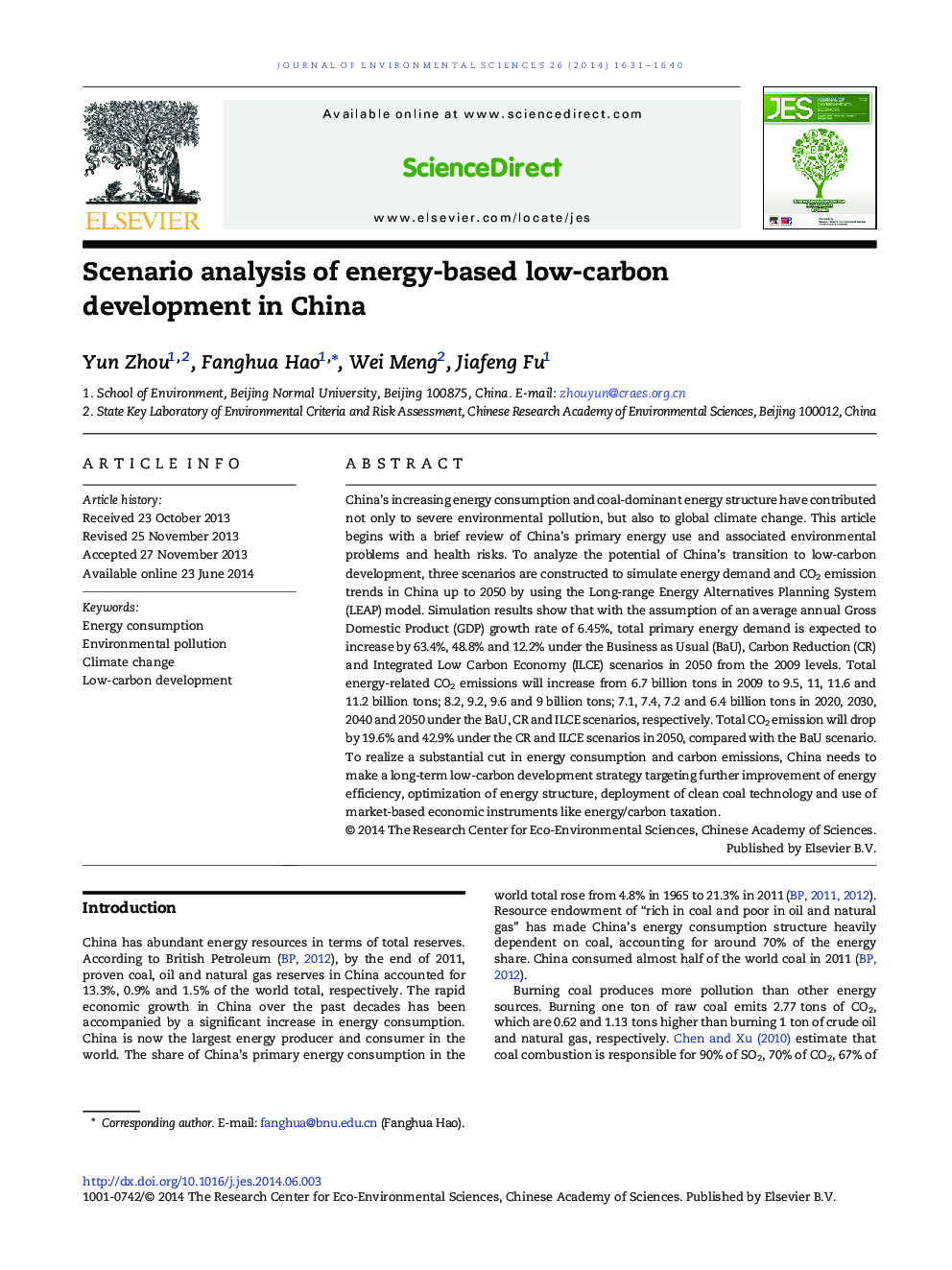| Article ID | Journal | Published Year | Pages | File Type |
|---|---|---|---|---|
| 4454266 | Journal of Environmental Sciences | 2014 | 10 Pages |
China's increasing energy consumption and coal-dominant energy structure have contributed not only to severe environmental pollution, but also to global climate change. This article begins with a brief review of China's primary energy use and associated environmental problems and health risks. To analyze the potential of China's transition to low-carbon development, three scenarios are constructed to simulate energy demand and CO2 emission trends in China up to 2050 by using the Long-range Energy Alternatives Planning System (LEAP) model. Simulation results show that with the assumption of an average annual Gross Domestic Product (GDP) growth rate of 6.45%, total primary energy demand is expected to increase by 63.4%, 48.8% and 12.2% under the Business as Usual (BaU), Carbon Reduction (CR) and Integrated Low Carbon Economy (ILCE) scenarios in 2050 from the 2009 levels. Total energy-related CO2 emissions will increase from 6.7 billion tons in 2009 to 9.5, 11, 11.6 and 11.2 billion tons; 8.2, 9.2, 9.6 and 9 billion tons; 7.1, 7.4, 7.2 and 6.4 billion tons in 2020, 2030, 2040 and 2050 under the BaU, CR and ILCE scenarios, respectively. Total CO2 emission will drop by 19.6% and 42.9% under the CR and ILCE scenarios in 2050, compared with the BaU scenario. To realize a substantial cut in energy consumption and carbon emissions, China needs to make a long-term low-carbon development strategy targeting further improvement of energy efficiency, optimization of energy structure, deployment of clean coal technology and use of market-based economic instruments like energy/carbon taxation.
